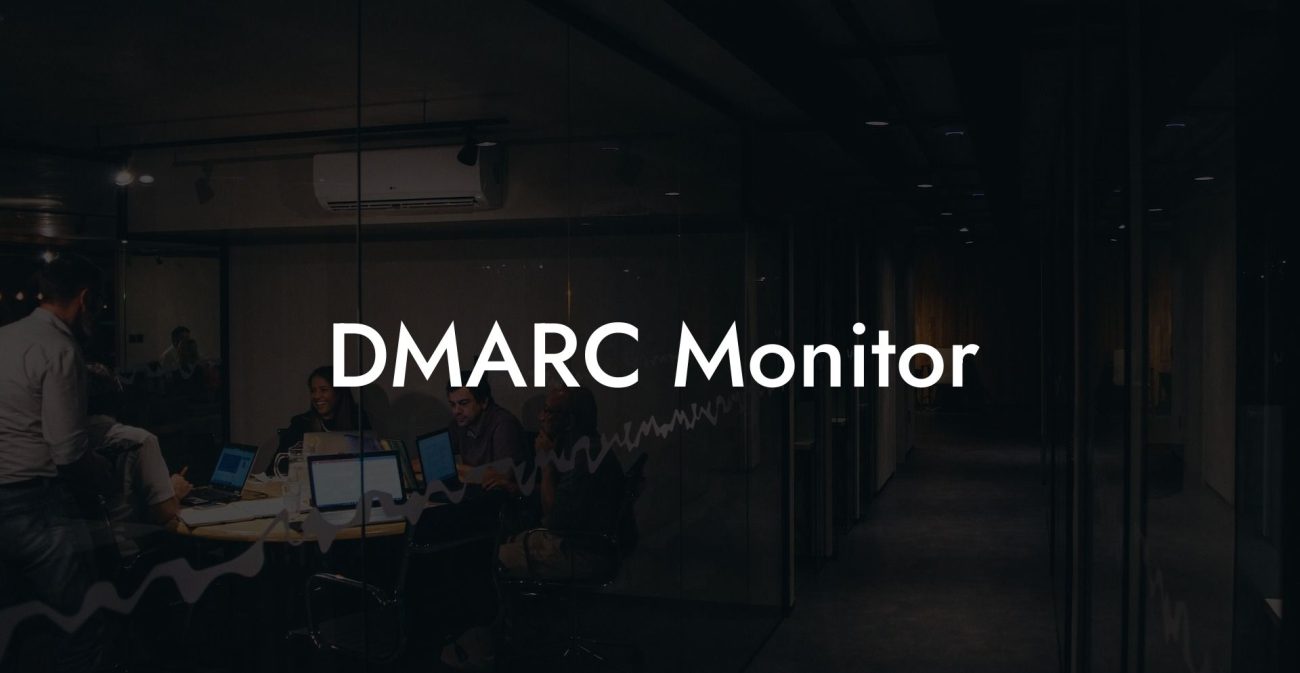In today's digitally-driven world, businesses rely heavily on emails to communicate with employees, customers, and partners. However, this also makes email a lucrative target for cybercriminals who aim to deceive individuals and organizations by impersonating legitimate businesses. One way to protect your email communication is by using DMARC, especially if you're using Salesforce, a popular Customer Relationship Management (CRM) platform. In this blog post, we'll shed light on what DMARC is, its significance with Salesforce, and how to implement it to bolster your email security.
DMARC Salesforce Table of Contents
What is DMARC?
Domain-based Message Authentication, Reporting, and Conformance (DMARC) is an email authentication protocol designed to combat email spoofing. It allows domain owners to set policies that inform receiving mail servers how to handle unauthenticated messages claiming to originate from their domain. DMARC simplifies email management by standardizing the process of identifying legitimate messages, preventing cybercriminals from utilizing your domain for malicious activities.
Why is DMARC Important for Salesforce Users?
Protect Your Data Today With a Secure Password Manager. Our Top Password Managers:
Salesforce is a widely-used CRM platform that enables organizations to manage their customer interactions across various communication channels, including email. Businesses using Salesforce send and receive sensitive information through emails daily, and falling victim to phishing attacks could significantly harm their reputation and customer trust.
Implementing DMARC in Salesforce adds an extra layer of email security. It safeguards your organization's domain, ensuring malicious emails don't tarnish your brand name and reach recipients' inboxes. Furthermore, DMARC enables businesses to monitor and analyze email sending activities, providing valuable insights for improving email security and deliverability.
How to Set Up DMARC for Salesforce
Implementing DMARC in Salesforce involves a series of steps, including generating SPF records, creating DKIM keys, and configuring DMARC records. Let's break down these steps in detail:
1. Configure Sender Policy Framework (SPF) Records
SPF is an email authentication technique used for detecting and blocking email spoofing. Before you set up DMARC, ensure you have SPF configured correctly. Salesforce automatically creates an SPF record for your domain, but you must include this in your domain's DNS records.
2. Create DomainKeys Identified Mail (DKIM) Keys
DKIM enables the sender to sign emails with a digital signature, verified by the recipient's mail server. Salesforce users can generate a DKIM key pair by following these steps:
- Navigate to the 'Setup' menu in Salesforce.
- Click on 'Email Administration' followed by 'DKIM Keys'.
- Create a new DKIM Key by providing a selector and domain name.
- Save the generated key pair and include the public key in your domain's DNS records.
3. Configure DMARC Policy
After setting up SPF and DKIM, you can create a DMARC policy by formulating a DMARC record that includes the following components:
- Policy: Choose from 'none' (monitoring only), 'quarantine' (flag messages as suspicious), or 'reject' (block unauthenticated messages).
- Aggregate reports: Specifies the email address where aggregate reports will be sent.
- Failure reports: Specifies the email address where failure reports will be delivered.
- Identifier alignment: Determines the SPF and DKIM alignment requirements.
Add this DMARC record to your domain's DNS records and update it accordingly if you make changes to your email infrastructure.
DMARC Salesforce Example:
Let's take a look at an example of a DMARC record for a Salesforce user with the following policy:
v=DMARC1; p=quarantine; rua=mailto:aggregatereports@example.com; ruf=mailto:failurereports@example.com; adkim=s; aspf=s
This DMARC policy includes:
- p=quarantine: Messages failing DMARC checks will be flagged as suspicious.
- rua=mailto:aggregatereports@example.com: Aggregate reports will be sent to aggregatereports@example.com.
- ruf=mailto:failurereports@example.com: Failure reports will be delivered to failurereports@example.com.
- adkim=s and aspf=s: Alignment requirements are set to 'strict' for both SPF and DKIM.
In conclusion, implementing DMARC for Salesforce significantly enhances your organization's email security, protecting your domain from unauthorized use and phishing attempts. By combining SPF, DKIM, and DMARC, your organization can ensure secure and reliable email communication while maintaining trust with your customers. So, why wait? Implement DMARC now and fortify your email infrastructure. If you enjoyed this post and found it helpful, please feel free to share it with others and explore other guides on improving your cybersecurity at Voice Phishing.
Protect Your Data Today With a Secure Password Manager. Our Top Password Managers:















